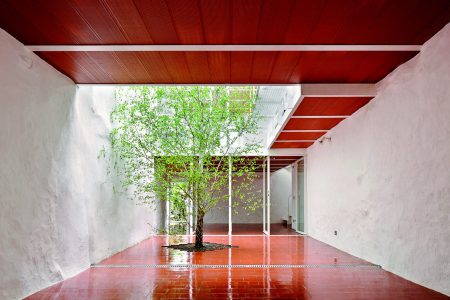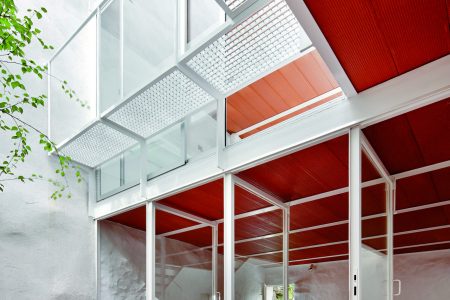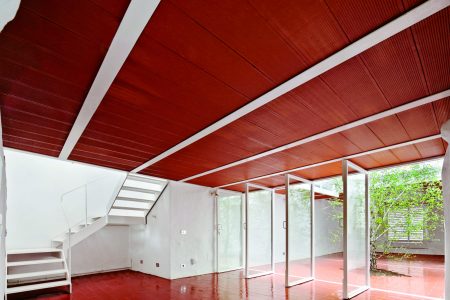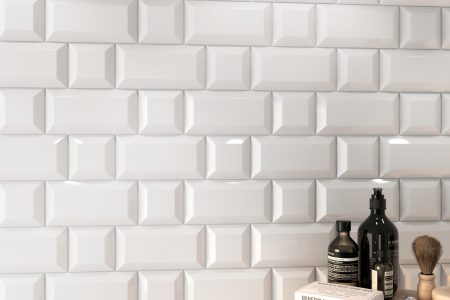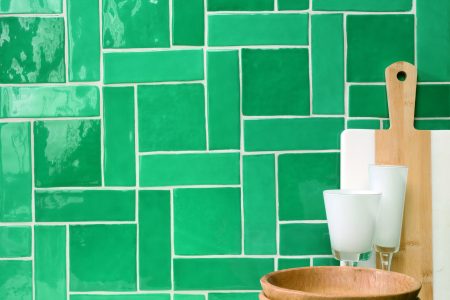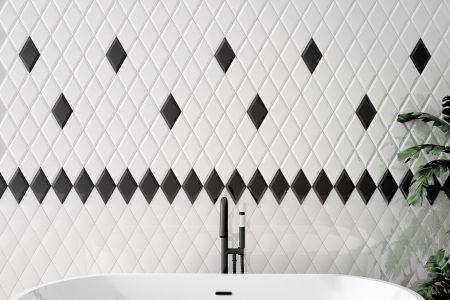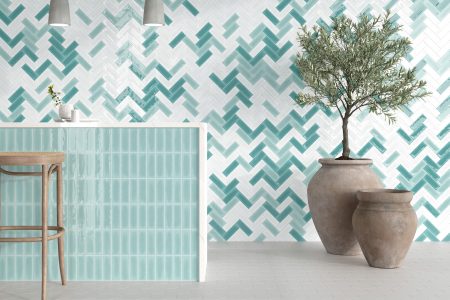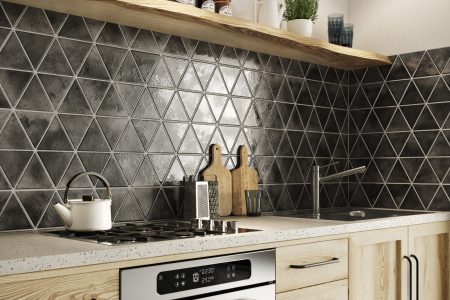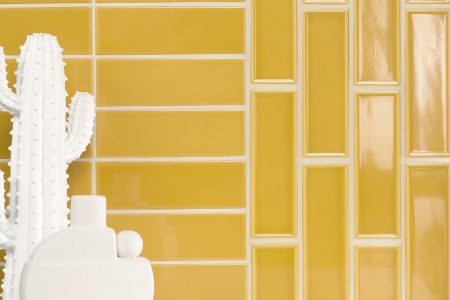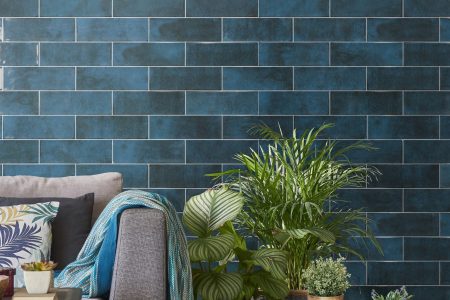Ceramic tiles are manufactured from compositions of clays and other inorganic raw materials, which undergo grinding and/or kneading, are molded and then dried and fired at a temperature sufficient for them to acquire the required properties in a stable manner.
The most common types of ceramic tiles are: porcelain stoneware, tile, stoneware paving, rustic stoneware, among others.
They are basically classified by their water absorption (being porcelain tile the one with the lowest water absorption and terracotta the type with the highest water absorption); by their forming method (pressed, extruded and laminated); and between glazed (GL) and unglazed (UGL).
To see their classification, selection, use, etc., you can access the Ceramic Tile Guide.
Tile is the traditional name for ceramic tiles with high water absorption, dry pressed and glazed. They can be manufactured by single or double firing. Their technical characteristics make them particularly suitable for interior wall cladding in residential or commercial premises.
Their characteristics make them suitable for predominant use as interior wall coverings in residential or commercial premises. The body or support is white majolica (fine earthenware) or colored, ranging from ochre to yellowish brown or reddish, without the color itself affecting the qualities of the product. It has a smooth and homogeneous texture, with little appreciable grains, inclusions or pores. The surfaces and edges are regular and well finished. The exposed face is covered by a vitrified glaze, in a wide range of colors and can be decorated
Generalized name for ceramic tiles with very low water absorption and unglazed. They obtain their color from the addition of colorants to their body. These tiles can be used as they are after firing or the exposed face can undergo a polishing process, which gives them shine and smoothness. In addition, the exposed face can be embossed for decorative or anti-slip purposes.
Porcelain stoneware is the name given to ceramic tiles with very low water absorption, dry pressed, generally unglazed and manufactured by single firing.
They are used for interior cladding in residential, commercial and even industrial buildings, for exterior floors and facades, and for interior wall cladding, in this case generally with a polished finish.
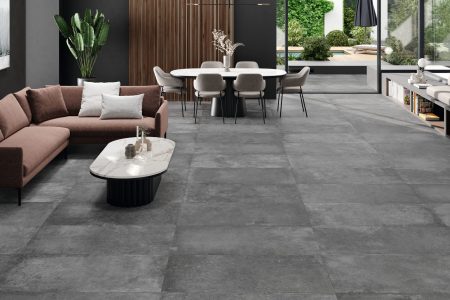
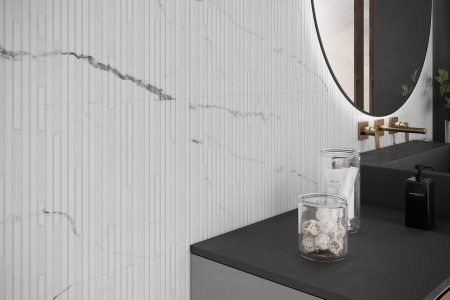
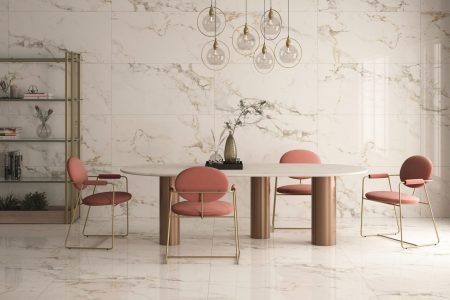
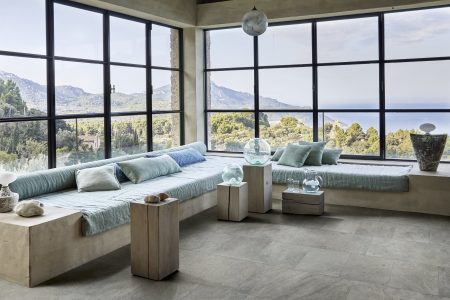
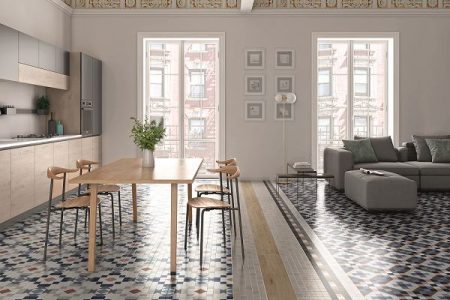
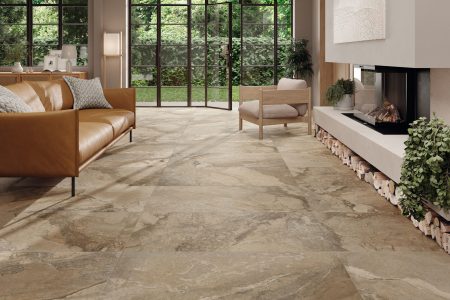
The most common name for ceramic tiles with low or medium-low water absorption, also known as “ceramic flooring”. This type of tile is ideal for interior flooring in residential or commercial premises. Some models are particularly resistant to frost or abrasion, so they can also be used for facade cladding and exterior flooring.
Glazed stoneware is the most common name for ceramic tiles with low or medium-low water absorption, dry pressed, glazed and generally manufactured by single firing. They are also known as stoneware floor tiles, glazed ceramic floor tiles or simply ceramic floor tiles.
They are suitable for interior floors in residential or commercial premises, and those with the appropriate characteristics, especially frost resistance or high resistance to abrasion, can be used for facade and exterior floor coverings.
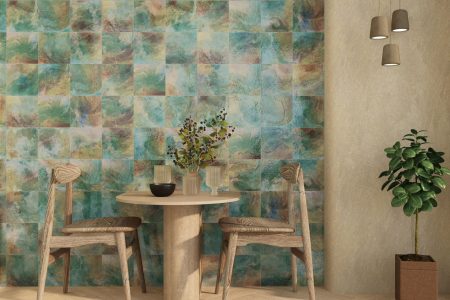
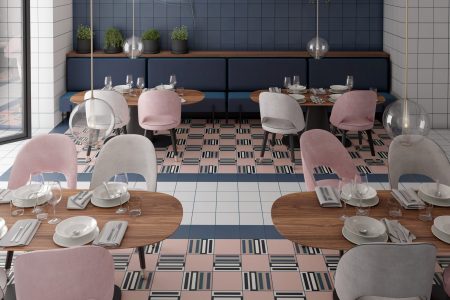
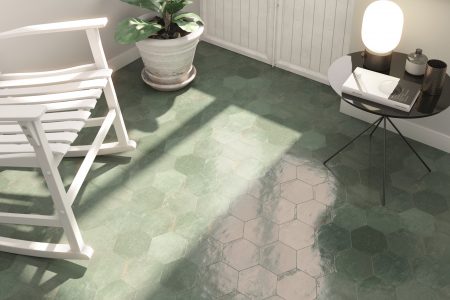
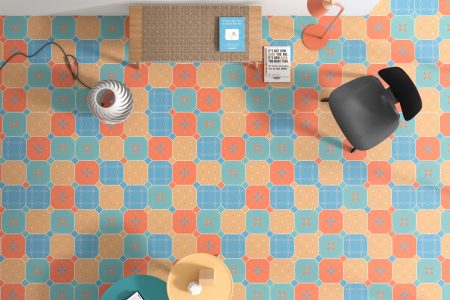
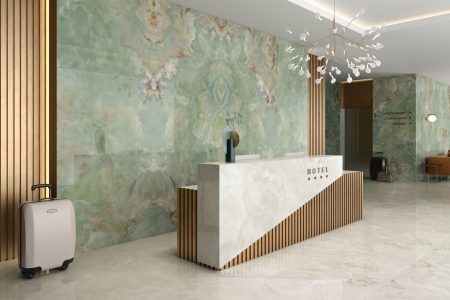
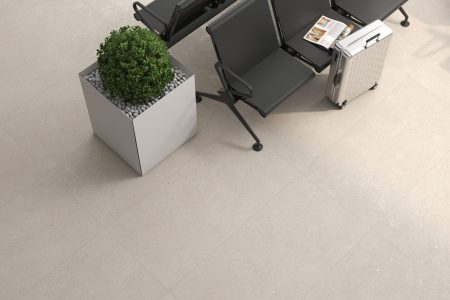
Usual name for ceramic tiles with low or medium-low water absorption, extrusion-molded, and generally unglazed. Its particular characteristics make it particularly suitable for different uses: façade cladding, exterior flooring, even in public spaces, floors in public places, industrial floors, etc. Its finish with moderate surface irregularities, edges and color give it particular decorative possibilities.
Rustic stoneware is the name used to designate ceramic tiles with low or medium-low water absorption and extruded, generally unglazed.
There is a wide variety of types, among which are:
- Quarry tiles, because of their similarity to the English tiles of this denomination. After extrusion and cutting, they are molded at low pressure and may receive an edge marking at that time.
- Spaltplatten, These are molded by simultaneously extruding two pieces, joined by the grooves on the back, which are separated once fired with a dry blow that leaves an irregular breakage profile on the grooves.
- Salted stoneware, on whose exposed face common salt is projected during firing, resulting in a film with an uneven bronze luster; they are used in walls, including exteriors.
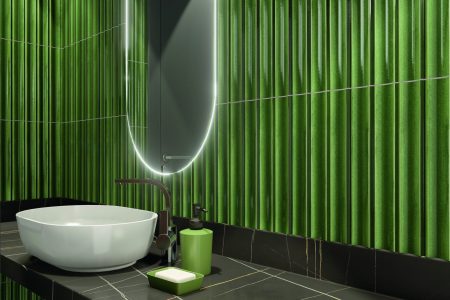
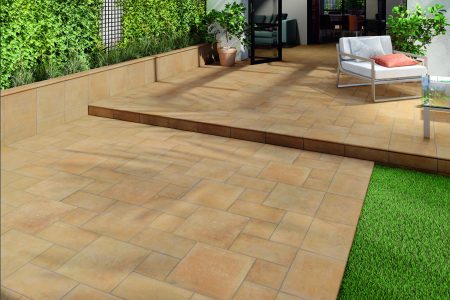
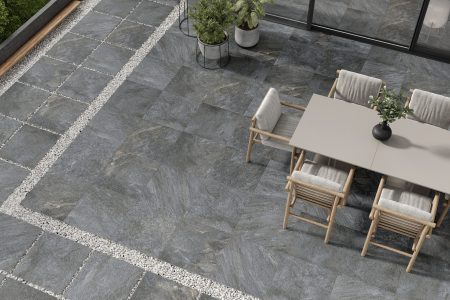
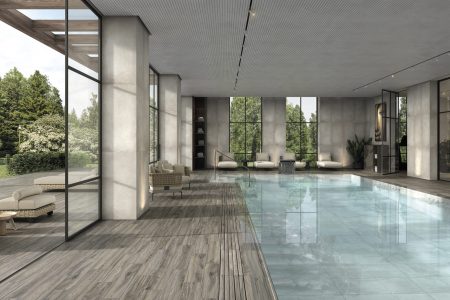
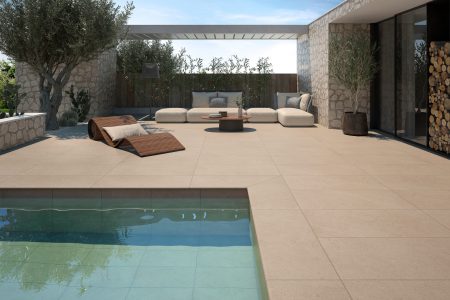
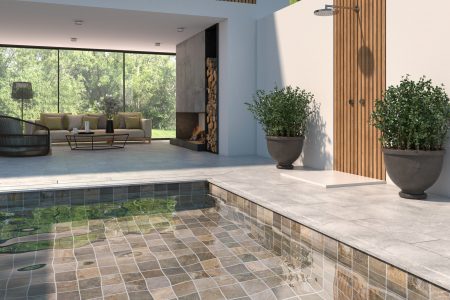
It is the name applied to the generally square and small pieces, considering as such those that can be inscribed in a square of 7x7cm, although they generally measure between 2x2cm and 5x5cm.
The name mosaic only refers to the size of the pieces but not to the type of material. To facilitate their placement, they are generally glued on the visible side to sheets of perforated paper or, on the reverse side, to a textile, paper or plastic net. They are thus kept in regular sets of 30x30cm or 30x60cm or of that order formed by equal pieces, or of coordinated sizes or shapes, of one or more colors or even forming patterns (fretwork, checkerboards or others). The paper on the face side comes off after laying and the backing net is incorporated into the gripping material.
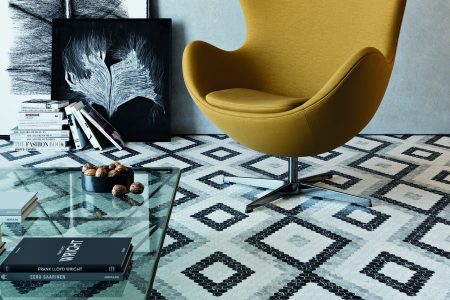
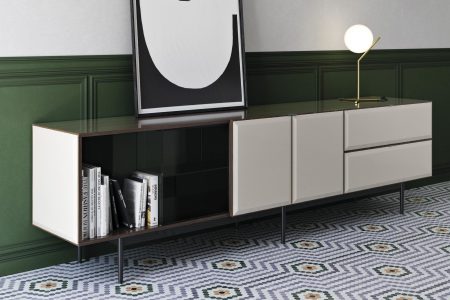
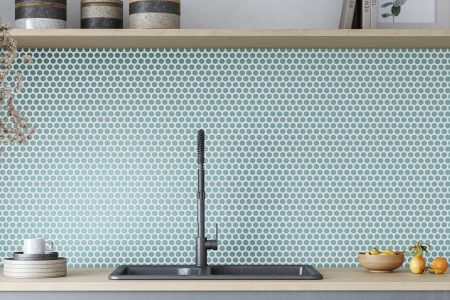
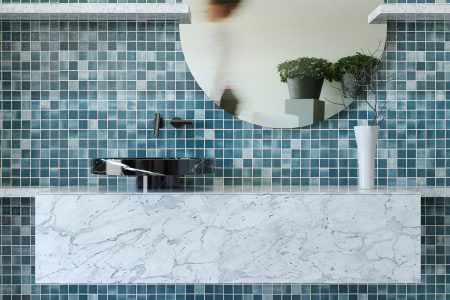
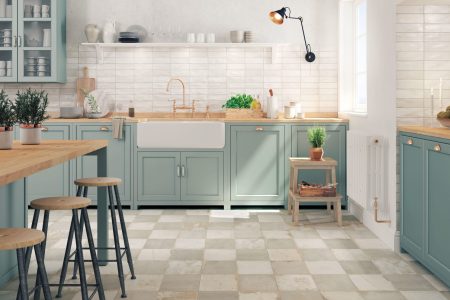
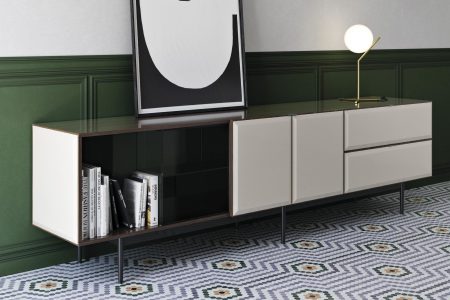
The most common name for a wide variety of products with very different characteristics, coinciding only in their rustic appearance, often manufactured in small production units and with artisanal means.
Fired clay is the name commonly applied to a wide variety of tiles with very different characteristics, coinciding only in their rustic appearance and high water absorption, and in the fact that most of them are not glazed. Production is limited, discontinuous and very dispersed and they are generally manufactured in small production units and with artisan means.
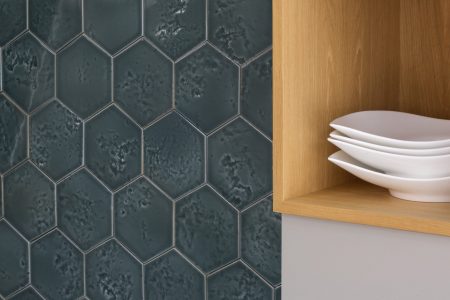
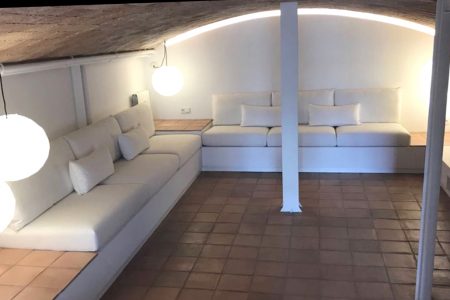
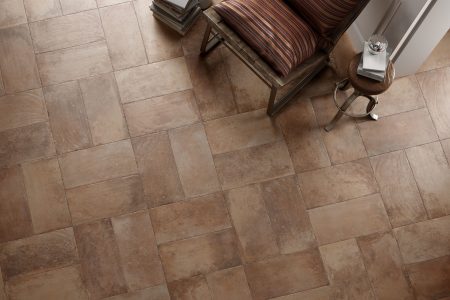
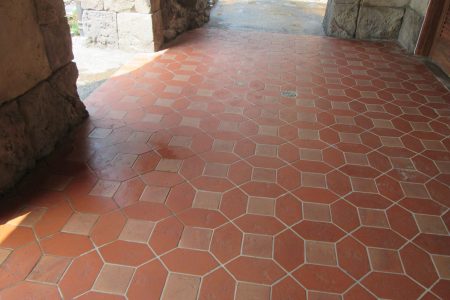
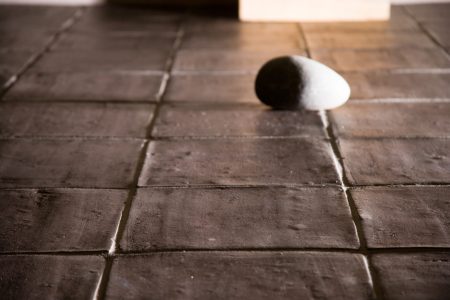
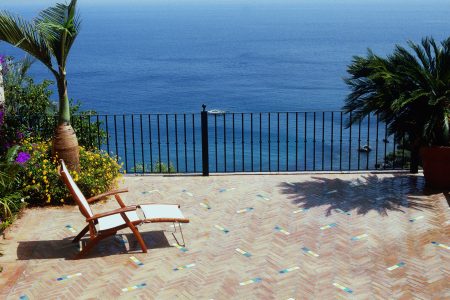
The support is red or reddish-brown, typical of fired clay, with an inhomogeneous texture, and it is common to see small grains, pores or incrustations.
Catalan tile is the traditional name for tiles with medium-high to high or even very high water absorption, extruded, generally unglazed. Production and consumption are stable or with a slight downward trend, and as its name indicates, its manufacture is mainly concentrated in Catalonia. Unglazed tiles are used for flooring terraces, balconies and porches, often in combination with olambrillas (small square pieces of white stoneware with blue decoration, or glazed earthenware with relief or multicolored decoration).
